Natalie Pineda
Biology 🧍
13 resourcesSee Units
Reproductive Cellular division and the Development of Gametes.
What is meiosis?
Meiosis is the process of producing gametes or reproductive cells. Female gametes are called ova or egg cells. Males gametes are called sperm cells. Meiosis occurs in sexually producing eukaryotes. In meiosis, contrary to mitosis, the mother cell produces four daughter cells that are all genetically different.
Each gamete produced in meiosis is haploid. Haploid means “half.” So, each gamete contains half the number of chromosomes as its parent cell.
There are two parts to meiosis: Meiosis I and Meiosis II.
Interphase
Before a cell undergoes Meiosis it must undergo Interphase, a period of cell growth. There are three phases of Interphase:
- G1 Phase: This phase is often referred to as the “growth stage” because the cell grows in preparation of cell division. This is the phase where cells also produce proteins, enzymes, and nutrients.
- S Phase: The S Phase is where DNA is synthesized or replicated. An easy way to remember is S for Synthesize. The cell spends most of its time in the S phase during Interphase.
- G2 Phase: In G2 cells continue to grow and synthesize proteins.
Once a cell has gone through interphase it is ready to begin the process of meiosis. The next phase the cell will enter is prophase I.
Meiosis I
Prophase I
In prophase I, the following occurs:
- Genetic recombination, which is a process by which genes recombine in order to produce different genes than the parents had. This creates genetic diversity.
- Genetic recombination is accomplished through a process called crossing over. During crossing over two homologous non-sister chromosomes exchange genetic information. Homologous chromosomes contain the same type of DNA sequences but are not identical, and one comes from each parent.
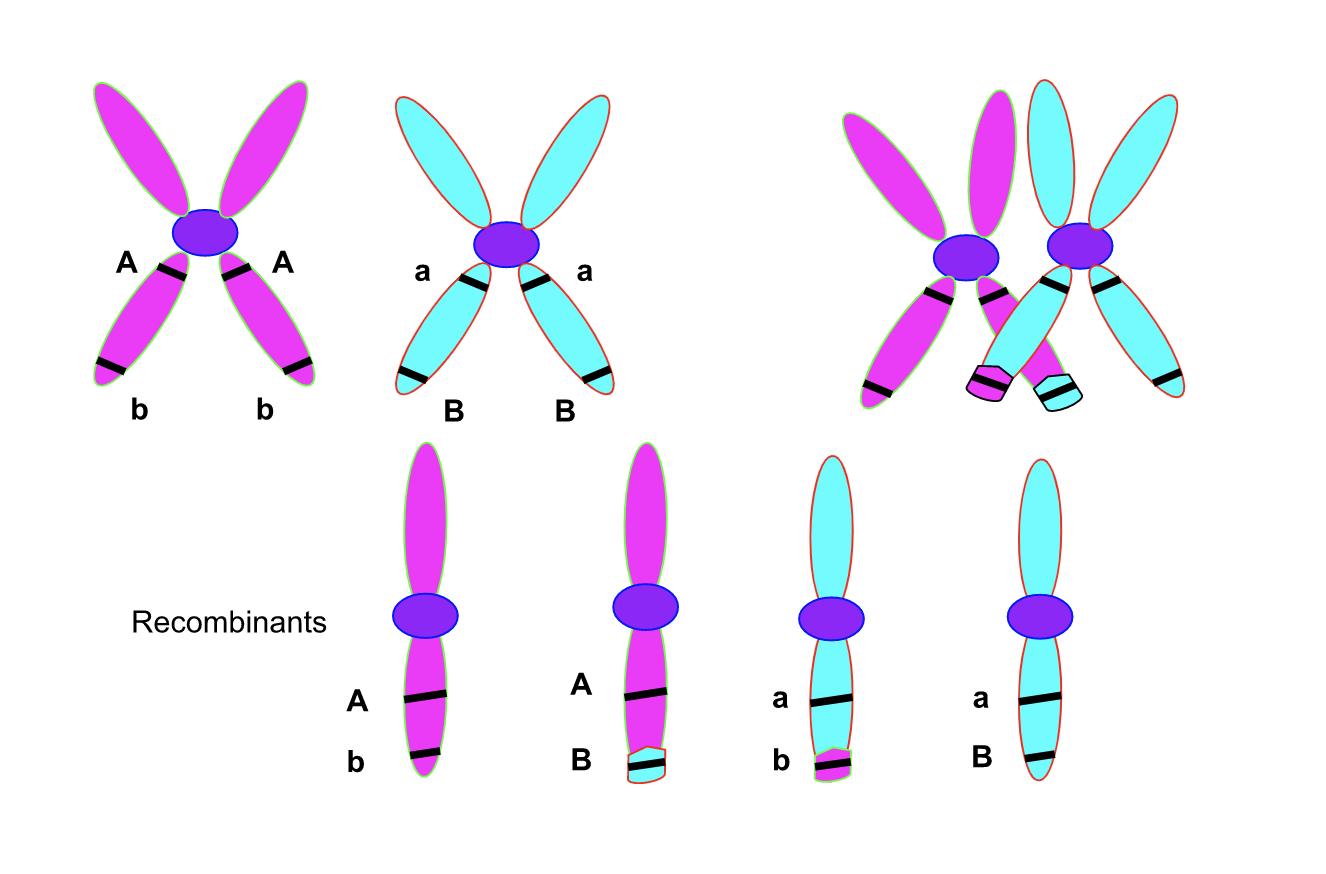
- Chromosomes begin to condense into a coiled form.
- The nuclear envelope breaks down and centrioles migrate away from each other.
Metaphase I
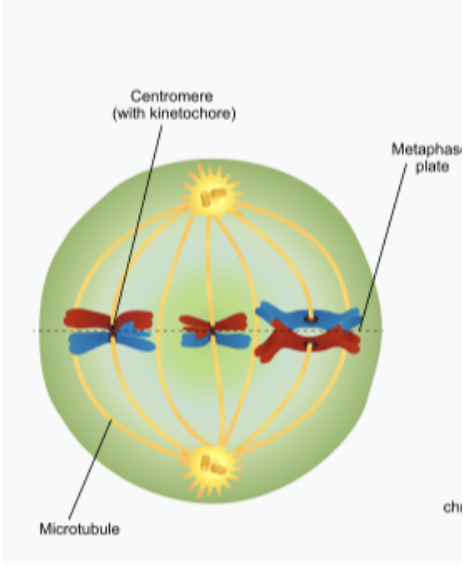
In metaphase I, the following occurs:
- The mitotic spindles begin to move chromosomes towards the metaphase plate in the center of the cell.
- Pairs of homologous chromosomes align together in a random order.
Anaphase I
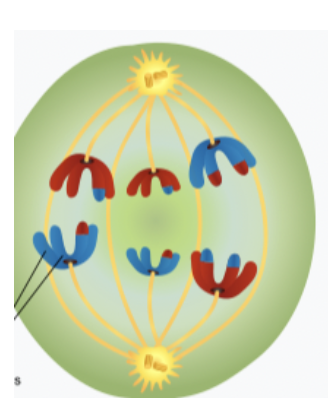
In anaphase I, the following occurs:
- The homologous chromosome pairs that were lined up along the metaphase plate are separated and pulled to opposite sides of the cell by the microtubules.
- The sister chromatids are not separated by the mitotic spindle so they stay together on opposite sides of the cell, creating a haploid number of chromosomes on each pole.
- The spindle fibers elongate the cell to prepare for division.
Telophase I
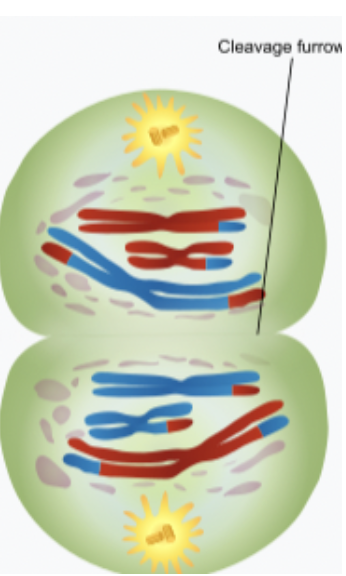
In telophase I, the following occurs:
- Homologous chromosomes continue to move to the opposite poles.
- Two nuclei form around the chromosomes.
- Cytokinesis, the division of the cytoplasm, typically occurs in this stage depending on the cell type.
- At the end of telophase I and cytokinesis two haploid daughter cells are created that are genetically different from their parent.
From here, the two daughter cells enter meiosis II, beginning with prophase II.
Meiosis II
Prophase II
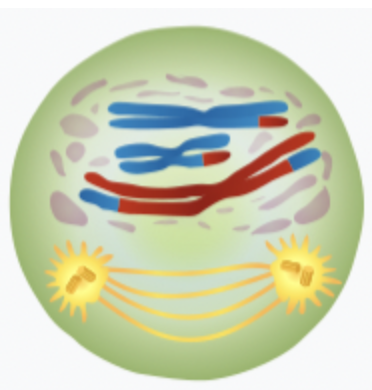
In prophase II, the following occurs:
- The nuclear membrane starts to dissolve.
- The spindle network reappears and the centromeres move to opposite sides of the cell
Remember: In the transition from meiosis I to meiosis II, there is no interphase and the cells do not replicate new DNA.
Metaphase II
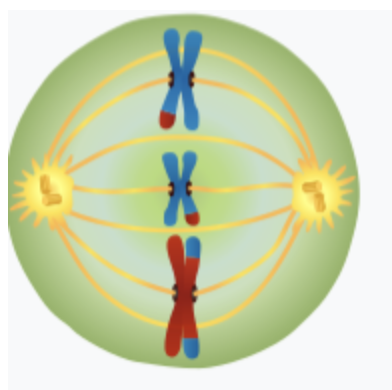
- The chromosomes are captured by the mitotic spindles.
- The sister chromatids line up along the center of the cell, at the metaphase plate
Anaphase II
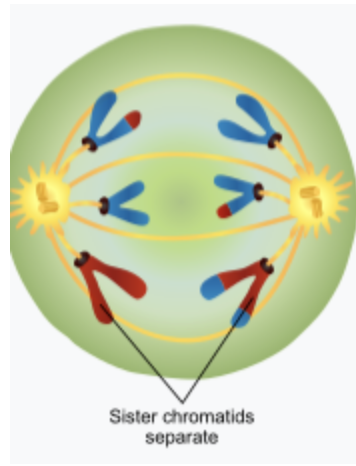
- The sister chromatids of the chromosomes are pulled apart and move to opposite sides of the cell.
- The spindle fibers elongate the cell to prepare for division.
Telophase II
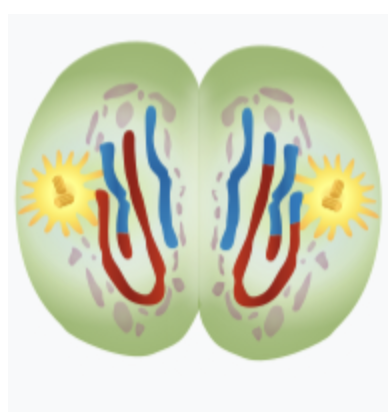
- The nuclear membrane reforms around the chromosomes.
- Cytokinesis occurs, and each cell’s cytoplasm is divided, creating 4 total haploid cells called sex cells.
In brief, meiosis creates four genetically different sex cells. This is different from mitosis, which creates two genetically identical somatic cells. Each of the daughter cells has a haploid number of chromosomes. Meiosis allows for eukaryotes to create genetically diverse offspring. Other types of cells that are not used for reproduction like skin cells, are replicated through mitosis.
Connect with other students studying Biology with Hours!
Browse Study Guides By Unit
🔬Cells
⚙️Biological Processes
🧍Human Body Structures
👨👩👦Genetics
🐒Evolution

Fiveable
Resources
© 2023 Fiveable Inc. All rights reserved.